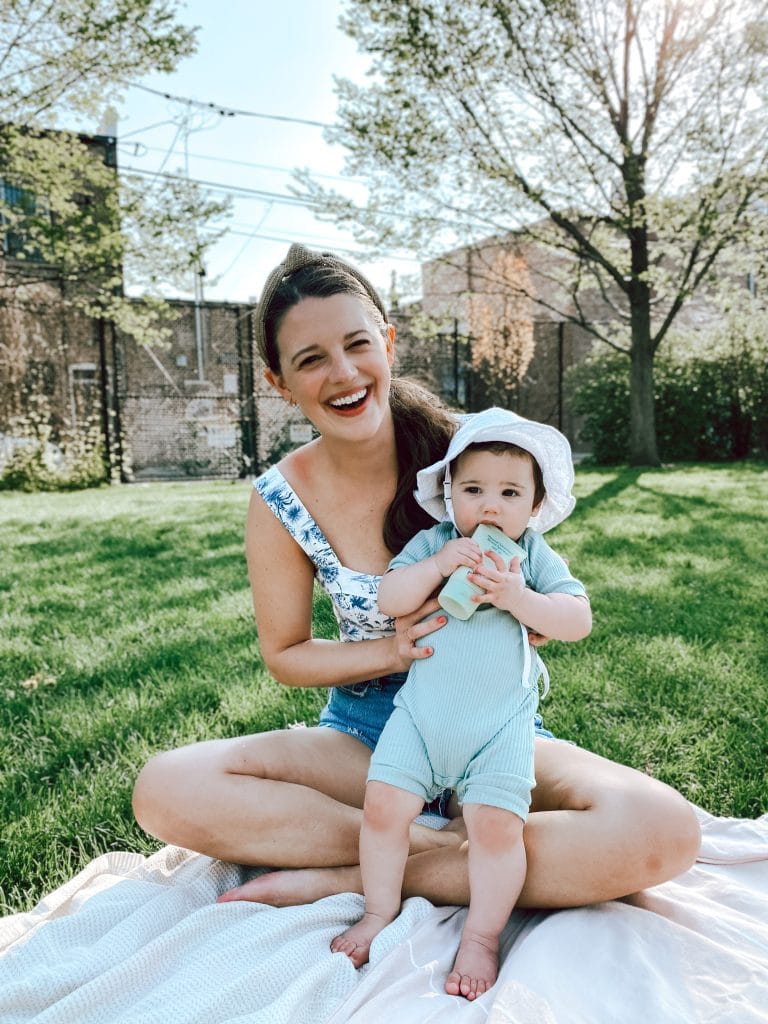According to the American Academy of Pediatrics (AAP), babies under six months should not use sunscreen unless necessary. Instead, keep them in shaded areas, dress them in lightweight, protective clothing, and use hats with wide brims. If avoiding sun exposure isn’t possible, apply a small amount of mineral-based sunscreen (like those with zinc oxide or titanium dioxide) to limited areas such as the face and back of the hands.
For babies older than six months, sunscreen becomes an essential part of their skincare routine whenever they are outside for extended periods, even on cloudy days.
How to Apply Sunscreen on Babies
Applying sunscreen to babies requires special care to ensure it’s effective without causing discomfort or irritation. Follow these expert tips:
1. Choose the Right Sunscreen
Select a broad-spectrum sunscreen with SPF 30 or higher that is specifically designed for babies. Mineral-based sunscreens containing zinc oxide or titanium dioxide are ideal, as they sit on the skin and block UV rays without being absorbed. Avoid chemical sunscreens, which may contain ingredients like oxybenzone that could irritate sensitive skin or pose potential health risks.
2. Apply Sunscreen Before Heading Outside
Apply sunscreen 15–30 minutes before sun exposure to allow it to create a protective barrier. This ensures maximum effectiveness when your baby is outside.
3. Use the Right Amount
Use enough sunscreen to cover all exposed areas generously. Most experts recommend about a teaspoon for the face and neck and a few teaspoons for the rest of the body. Don’t forget often-missed spots like the ears, back of the neck, tops of feet, and hands.
4. Reapply Regularly
Sunscreen wears off, especially if your baby is swimming, sweating, or being toweled off. Reapply every two hours or immediately after water exposure, even if the sunscreen is labeled water-resistant.
5. Perform a Patch Test
Before applying a new sunscreen for the first time, test it on a small area of your baby’s skin to check for allergic reactions or irritation.
Additional Sun Safety Tips for Babies
While sunscreen is essential, it’s not the only tool in your sun protection arsenal.
- Seek Shade: Whenever possible, keep your baby in shaded areas, especially between 10 a.m. and 4 p.m., when the sun’s rays are strongest.
- Dress Smart: Use lightweight clothing with long sleeves and pants, along with a wide-brimmed hat to cover your baby’s face and neck.
- Protect Their Eyes: Baby sunglasses with UV protection can shield sensitive eyes from harmful rays.
Why Mineral Sunscreens Are Best for Babies
Mineral-based sunscreens are highly recommended for babies due to their gentler ingredients and physical blocking mechanisms. Unlike chemical sunscreens that absorb into the skin and convert UV rays into heat, mineral sunscreens sit on the surface and reflect the rays away. This reduces the risk of irritation and potential exposure to harmful chemicals.
For more information on the benefits of mineral sunscreens, refer to the Environmental Working Group’s SunscreenGuide, which lists top-rated options for babies and children.
Common Sunscreen Mistakes to Avoid
Even with the best intentions, parents can make mistakes that compromise sun protection. Avoid these pitfalls:
- Skipping Reapplication: Sunscreen needs to be reapplied every two hours for continuous protection.
- Underapplying: Using too little sunscreen reduces its effectiveness. Be generous!
- Using Expired Sunscreen: Check expiration dates, as expired sunscreen loses its protective properties.
- Relying Only on Sunscreen: Combine sunscreen with other protective measures like shade and clothing.
When Sunscreen Isn’t Enough
While sunscreen provides a significant layer of protection, it’s not foolproof. Babies have sensitive skin that can burn easily even with proper precautions. According to the Skin Cancer Foundation, parents should treat sunscreen as part of a comprehensive sun protection strategy.
For babies under six months, the emphasis should remain on physical barriers like clothing and shade. For older infants and toddlers, sunscreen serves as an excellent complement to these protective measures.
Final Thoughts
Knowing when and how to apply sunscreen on babies is key to ensuring their skin stays healthy and protected. Start with physical barriers like shade and protective clothing, and introduce mineral-based sunscreen as needed for infants older than six months. Remember to apply generously, reapply frequently, and combine sunscreen with other sun safety strategies for maximum effectiveness.
By following these expert tips, you’ll not only protect your baby from painful sunburns but also lay the foundation for lifelong healthy sun habits.

